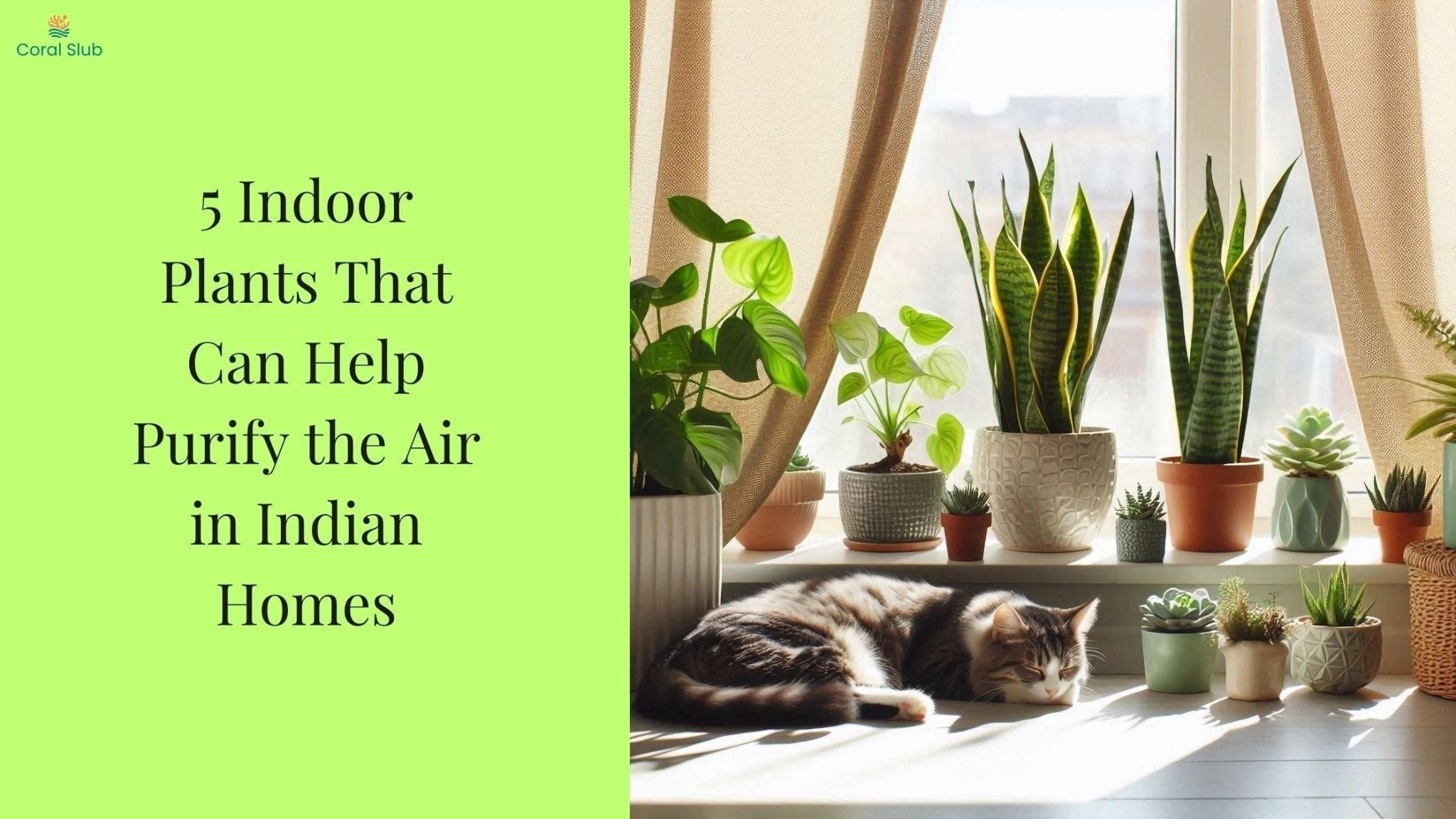Every year, as winter approaches, Indian cities face a familiar challenge. Rising air pollution levels. From Delhi to Mumbai, the drop in temperature and increased smog can make the air indoors feel heavy and stale. While air purifiers and masks have become common, there’s a simpler and more natural way to breathe cleaner air at home: indoor plants.
Indoor greenery not only brings life and freshness to your living spaces but also works quietly to absorb toxins, regulate humidity, and release oxygen. With a few thoughtful choices, you can create your own little green sanctuary that looks beautiful and helps you breathe better.
Here are five of the most effective indoor plants for improving air quality in Indian homes.
1. Snake Plant (Sansevieria trifasciata)

If you’re looking for a low-maintenance plant that purifies air day and night, the snake plant is your best friend. It’s known for absorbing harmful toxins like formaldehyde, xylene, and nitrogen oxides, pollutants often found in paints and furniture varnishes.
This plant is nearly indestructible, making it ideal for beginners or busy homeowners. It thrives in both bright and low light and doesn’t need frequent watering. Beyond its functional benefits, the upright sword-shaped leaves add a modern, sculptural touch to any corner of your home.
Place it in your bedroom or near your work desk to enjoy cleaner air even while you sleep or work.
2. Areca Palm (Dypsis lutescens)

Often called the butterfly palm, this elegant plant is one of the best natural air humidifiers. The Areca palm filters indoor air by removing carbon monoxide and formaldehyde, while also releasing large amounts of moisture, perfect for dry winter months when pollution levels peak.
Its lush, feathery fronds bring a tropical feel to Indian homes and can instantly soften a modern or minimal setup. The Areca palm prefers bright, indirect sunlight and slightly moist soil. Place it near windows or in your living room where it can catch filtered light throughout the day.
3. Peace Lily (Spathiphyllum)

The peace lily is a beautiful combination of form and function. Its glossy green leaves and elegant white blooms bring calmness to interiors while helping remove common indoor pollutants like benzene, trichloroethylene, and ammonia.
This plant thrives in low light, making it perfect for bedrooms, hallways, or corners that receive limited sunlight. It also absorbs excess mold spores, making the air fresher and reducing allergens. Just remember to water it moderately and keep the soil slightly moist.
Beyond its air-purifying qualities, the peace lily symbolizes peace and renewal, a lovely reminder of balance and serenity in daily life.
4. Money Plant (Epipremnum aureum)

A true classic in Indian homes, the money plant is not just lucky in Vastu terms but it’s also a powerful air cleanser. It helps remove volatile organic compounds (VOCs) from the air, such as benzene and formaldehyde, often released from cleaning products and paints.
The best part is its flexibility. You can grow it in soil or water, hang it from planters, or let it trail beautifully across shelves and window sills. Its heart-shaped green leaves blend easily with any décor style, adding a refreshing natural accent to your interiors.
Regular pruning keeps it healthy and prevents overgrowth. For busy households, it’s a resilient choice that delivers both style and substance.
5. Spider Plant (Chlorophytum comosum)

If you struggle to keep plants alive, start with the spider plant. It’s extremely adaptable, fast-growing, and one of the top performers in NASA’s list of air-purifying plants. Spider plants are excellent at filtering carbon monoxide, xylene, and formaldehyde, making them perfect for city homes exposed to vehicle pollution.
They thrive in indirect sunlight and produce small baby shoots that can be replanted easily: a sustainable way to expand your indoor garden. Their arched leaves add movement and lightness to interiors, whether placed on tables, hanging baskets, or kitchen shelves.
Styling and Placement Tips for Cleaner Indoor Air

While these plants work individually, combining a few of them can make your home’s air purification more effective. For example, pair a tall Areca palm with smaller snake plants or spider plants near windows to create a layered look.
Keep plants near areas with maximum airflow, for example near windows, balconies, or entryways. Avoid crowding too many in one spot, as good ventilation is key to their health. Regularly wipe leaves with a damp cloth to keep dust from blocking their ability to photosynthesize.
Adding natural planters like terracotta pots, ceramic jars, or woven baskets enhances their aesthetic appeal while maintaining breathability for the roots.
The Broader Impact of Indoor Plants

Beyond clean air, greenery brings emotional and psychological benefits. Studies show that being around plants reduces stress, increases focus, and promotes calmness. They create a natural rhythm inside homes and a sense of life and balance that no machine can replicate.
As pollution continues to rise seasonally, making space for a few indoor plants is one of the most rewarding decisions you can make for your health and home. It’s an effortless way to stay connected to nature, especially in urban life where green spaces are limited.
When the air outside turns grey, let your interiors stay fresh, green, and full of life.







